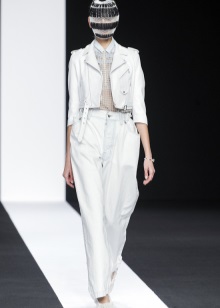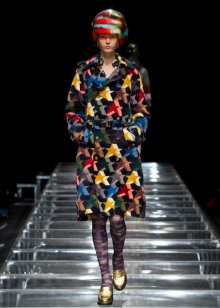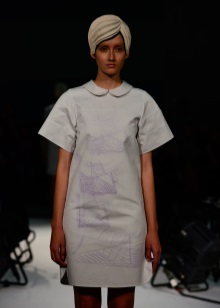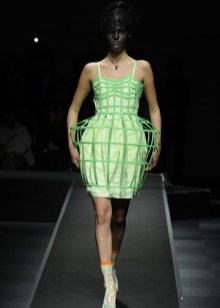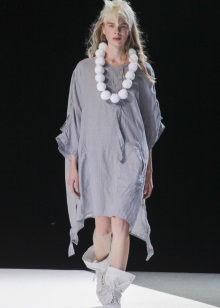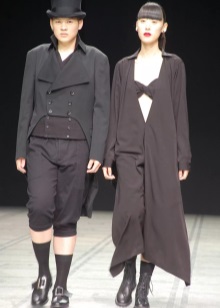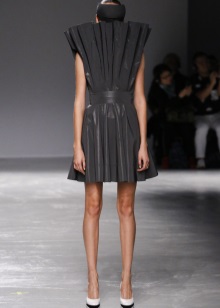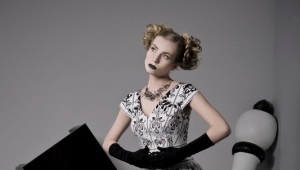Japanese women's clothing
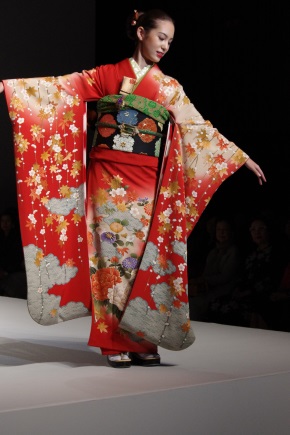
Most people think of a kimono when they think of Japanese clothing, although modern Japanese girls have long switched to more practical European-style clothes. But first - something from the history of the clothes of this country.
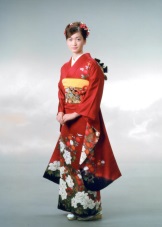
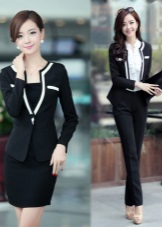
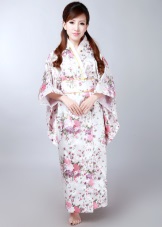
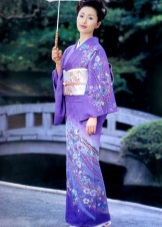
Story
The Japanese national costume has an ancient centuries-old history. This national dress is very popular today. The main attributes of Japanese clothing are geta, kimono, netsuke and hakama.

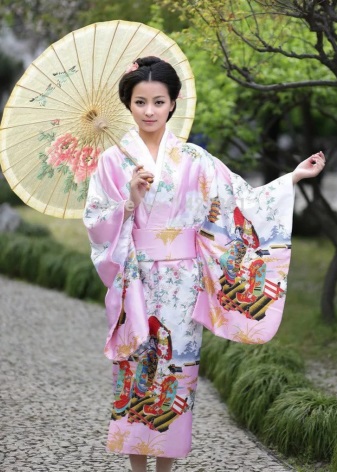
Geta
It is a shoe in the form of traditional wooden sandals, having the shape of a rectangle, which are fixed on the leg with straps passing between the toes.
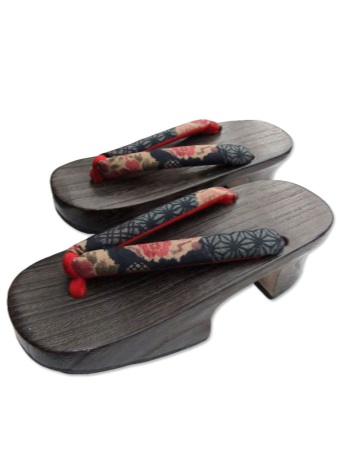
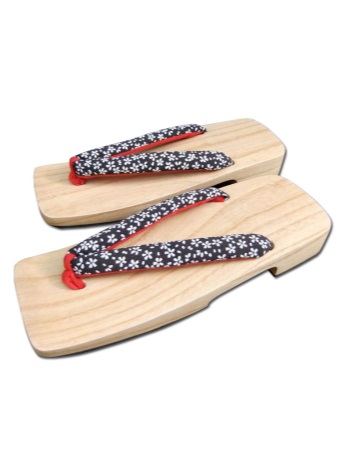
Kimono
These are national Japanese clothes (women's and men's).
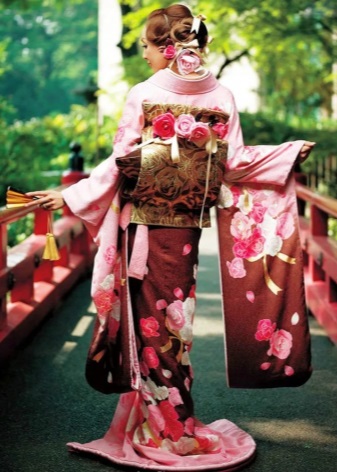
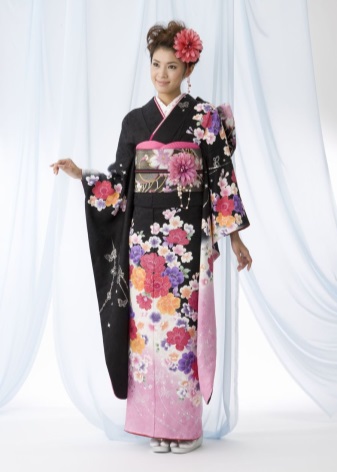
Netsuke
To put it simply, these are buttons on the clothes of a Japanese, or you can also say, a counterweight keychain. They are attached at the ends of the laces, which were used to tighten different bags with all sorts of different things - after all, pockets are not provided on the Japanese clothes. The material for the manufacture of netsuke is the horns of animals, their bones, fangs. There are netsuke and wooden, and gypsum, and made from some other convenient material.
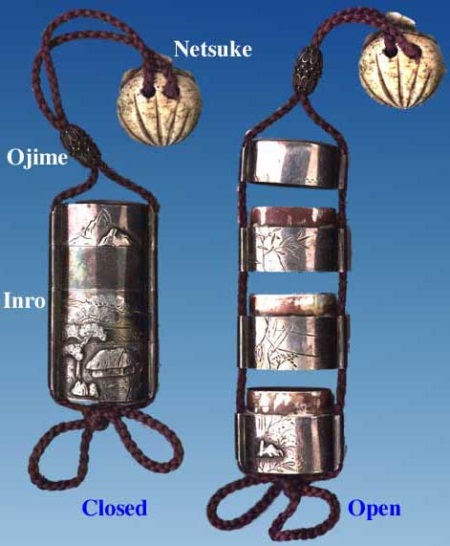
Hakama
In appearance, these clothes are very similar to the national Ukrainian wide harem pants worn by men. Hakama is a casual wear for Japanese men.

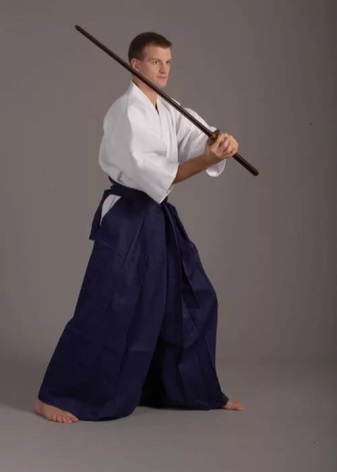
Japanese clothing styles
The end of the last century in Japan was marked by new unique styles and fashion trends. Time passed, and now the original Japanese style became interesting for the culture of European countries, where it began to spread very quickly.
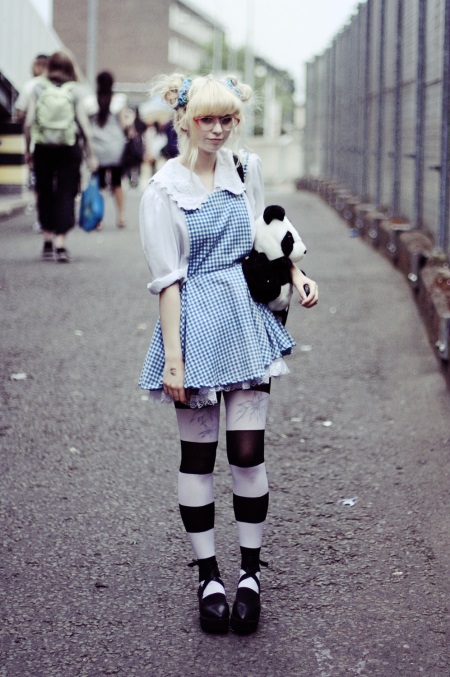
And our country is also no exception in this regard, and we have a lot of people who want to dress extravagantly and brightly, and Japanese clothes in this regard are the best that can be. Here are just some of the most prominent styles of Japanese fashion:
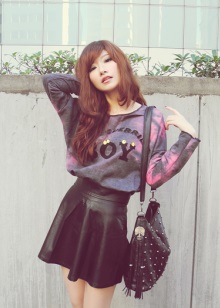
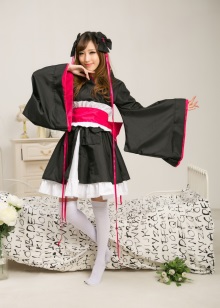
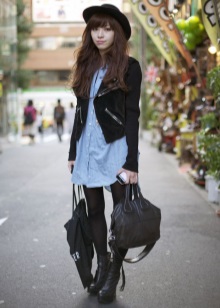
Visual Kei
In Russian, it literally means "visual style", it is based on Japanese glam and rock. What stands out is the catchy make-up and three predominant shades - black, red and white (and not only in clothes, but also in make-up), rock paraphernalia, leather and metal elements. This style has something in common with the familiar emo - and the bangs are long, and the clothes are dark. But Visual Kei also has differences that are unique to this style - its admirers love to surprise, and therefore their faces are either decorated with bandages, then they have breathtaking lenses inserted in their eyes, then they will put on a top hat, then a corset (or all together), there are their faces are covered with all sorts of art.
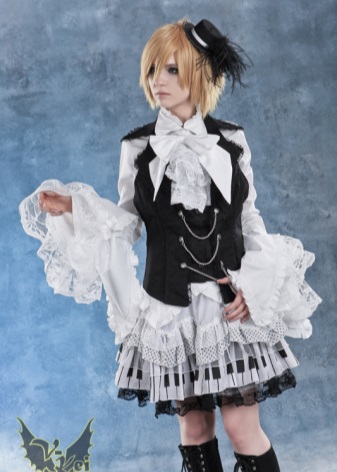
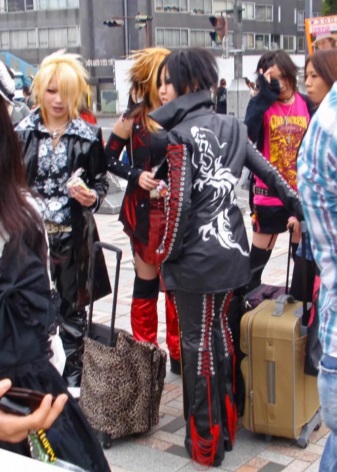
decora
This style is suitable for those who like to decorate themselves. A person dressed in this style may not yet be seen, but his approach is already audible - all kinds of key chains, badges, beads, bows and it is not clear what else will tinkle on him. Such people decorate themselves like a Christmas tree, and the one who laughs at them will be proved that he simply does not understand anything in fashion.
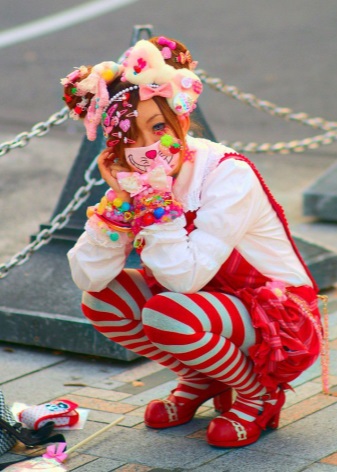

cosplay
This direction of Japanese fashion can be translated as "costume game". It is suitable for those who are in love with anime and computer games.Among the Japanese youth, this topic is very popular and almost everyone has one of these heroes, whom they will imitate in everything, including, of course, in appearance. There are cosplayers in our country, just don’t think that they imitate our Cheburashka or the hare from “Well, wait a minute!” - they also choose Japanese cartoon characters or computer games.

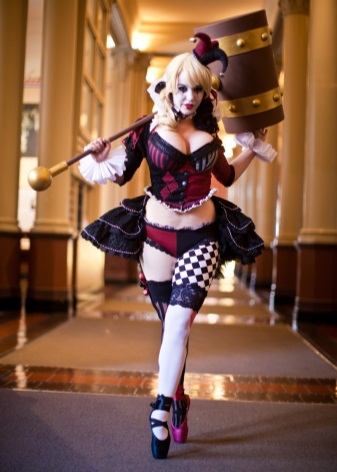
kawaii
The Kawaii style is always associated with something touching, infantile, with a predominance of pastel tones - pink, light green, sky blue and others like that, with all sorts of cute trinkets. Here you can draw a certain parallel with the Cosplay style, only in this case it is customary to imitate cute children's characters - animals or toys, tender and fluffy. Hence the name, which translates as "cute, touching."
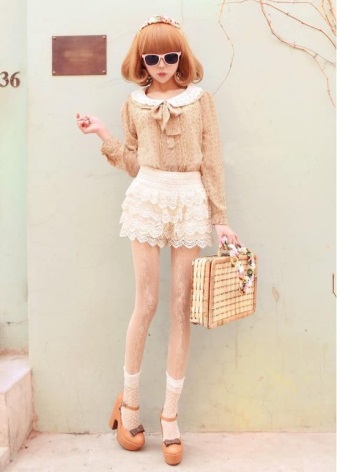
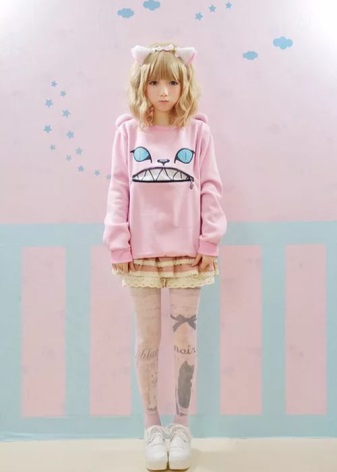
kigurumi
This is the name of comfortable, catchy and cute costumes, which are difficult to be indifferent to. The Kigurumi costume is soft and fluffy, representing one or another animal. Previously, they were used only as advertising, at a holiday for children or at a themed party. And over time, this style turned into a fashion trend, and now it is used both as a carnival costume and as homemade pajamas.
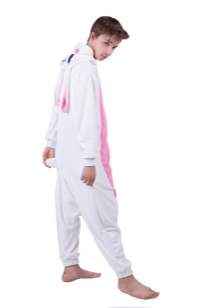


Harajuku
One of the Tokyo districts became the place where this style was born, and that's how it got its name. This area is rich in fashion stores and they sell a lot of stylish teen clothes. The Harajuku style is characterized by bright colors in clothes, from neon pink to bright purple, many accessories, vintage in colorful and unusual jewelry, and contrast in shades. Another name for this style is Tekenokozoku.Now there is also a store whose name is similar to the style: Takenoko, and this is the main supplier of clothing for those who care about the Harajuku subculture.
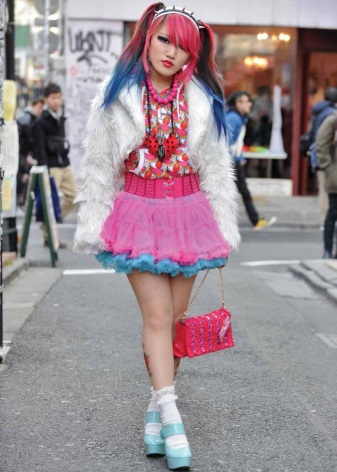
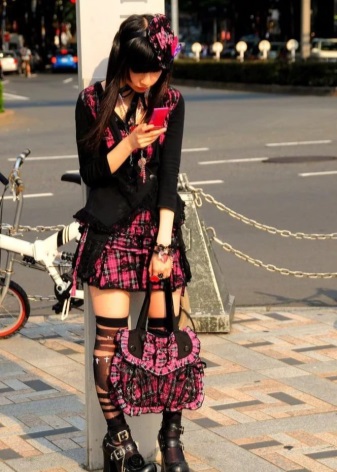
"Lolita"
This style is welcomed by ladies who want to keep their freshness for years to come, no matter how old they really are. This Japanese style can be called, perhaps, the only one where there are no flashy and catchy colors, and decorations are presented in quite adequate quantities. The main thing for this direction is to preserve the femininity of the image and its harmony, so the dress is decorated with delicate frills and ruffles, hairpins and bow decorations, flowers, hearts. The hairstyle of such a girl will consist of soft curls, and a nice little umbrella can complete her look.
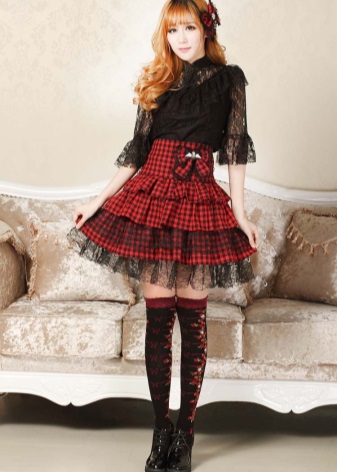
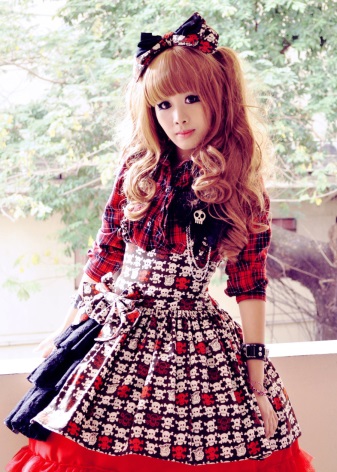
Koh Gal
This style will also help girls and women look younger for longer, but the essence of the image here is a little different. A fan of this style can be recognized by her unimaginably short school skirt and other emphatically childish things. In addition, such an image will not be complete if you do not bleach your hair.
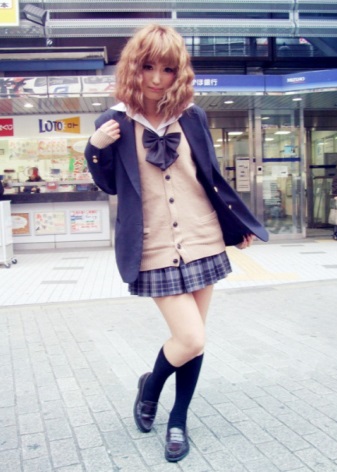

Morey Girl
In Russian words, this style is called "Girl from the thicket." This Japanese style is harmonious, and the range of colors and accessories is similar to the French "Provence", feminine, gentle and romantic. Clothing here consists of layered outfits and cute pastel-colored dresses. Lace, frills, delicate flowers in drawings and a small cage are also required. Cosmetics in this image are not used at all or used very little. Accessories are also minimal, most often they are gold-plated jewelry or leather.
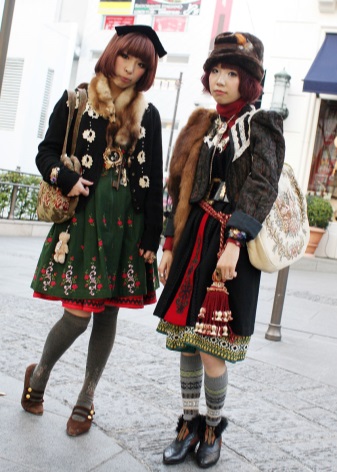
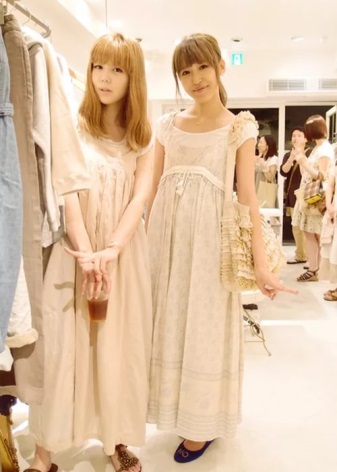
Anime
There are a lot of anime fans in the youth environment, thanks to numerous exciting Japanese cartoons.Japanese animators could not even imagine that the unprecedented and unique combinations in the clothes of their heroes would make such a splash in the youth fashion of the whole planet. Anime is not cosplay, where the style is to copy the clothes of your favorite character, everything is done with a wider scope and democratic views.


Clothing should only hint at a favorite character or a combination of several images at once. Although these are, of course, related styles. Anime is an extravagant style, enchanting and with a touch of sexuality in a costume, and therefore it cannot but inspire fashionistas who dream of a unique look.


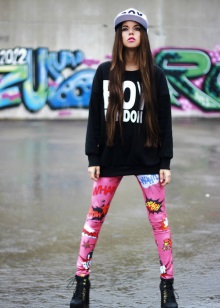
Yukata
The traditional style of kimono is in demand where there is a place for the ancient traditions of Japan. This may be a tea ceremony, the creation of ikebana, calligraphy. Such an outfit is also suitable on the day of marriage, for a funeral, for a graduation ball, for the celebration of coming of age. But the yukata is a very popular type of kimono, without which in the summer - well, just nothing. This is the simplest version of a kimono, it is considered summer.
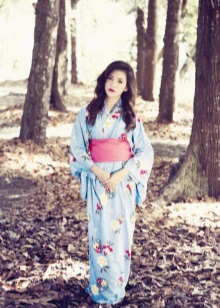


Yukata is a cotton product that is usually worn on the naked body. Its color depends on age - the younger the girl, the brighter the colors of such a kimono. Accessories in this case are flowers that adorn the hair, brooches and pins with flowers, a belt in the form of an obi bow or a koshihimo belt, a pearl necklace, earrings, bracelets.


Colors
The Japanese are a special people, and what is just a color for us, for them is also a feeling that can be characterized:
- iki - sophistication;
- shibui - restraint;
- hannari - joy.
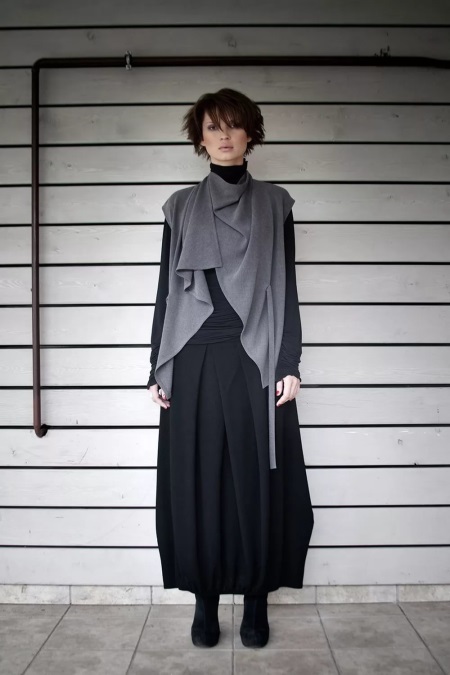
Red with white is something that has been cultivated since antiquity. In modern fashion, the style is based mainly on the following colors:
- black;
- white;
- red;
- pink;
- orange;
- golden;
- indigo
- and sometimes green.

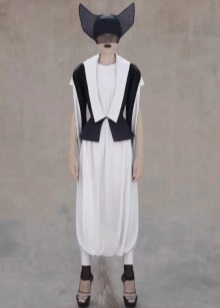
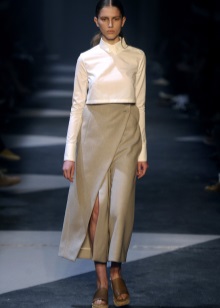
The most popular colors include floral prints with a Japanese theme, prints with hieroglyphs, flowers, butterflies, birds and forest landscapes on mountain slopes.
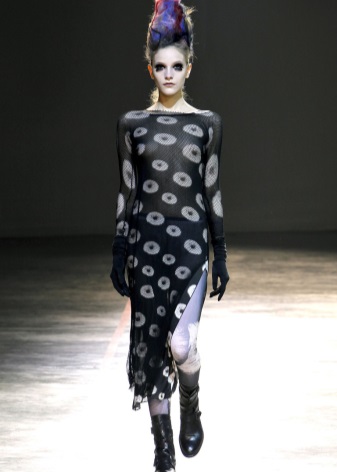
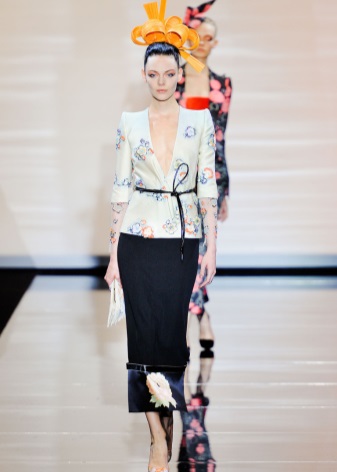
Croy
The Japanese national costume has been formed for more than one century. He could somehow transform, be concretized, change styles and silhouette, but the principle of cutting remained constant.
In the Japanese costume, not only the anthropological features of the figure are taken into account, but also the system of proportions, which concerns the parameters in the elements of the costume. For example, a female figure can be "trimmed" to aesthetic perfection by special techniques used under the lower kimono.
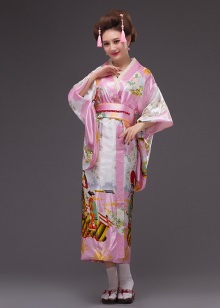
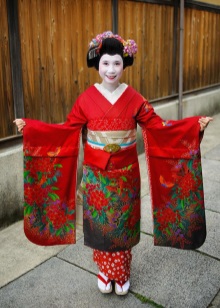
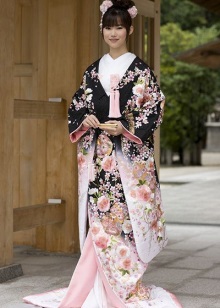
The fashion of the new season is the Patchwork technique, which is considered the most striking innovation, and almost all eminent designers agree with this statement. At the same time, fashion masters are predicting Patchwork for more than one year of popularity.

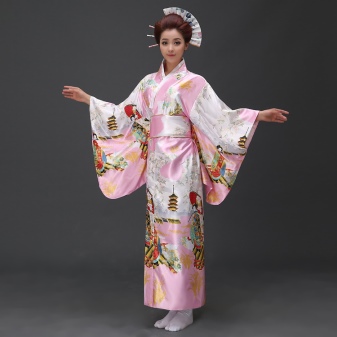
Fashion 2022 for girls
The Japanese are ahead of the rest in fashion: their clothing decisions are often unexpected and rather bold. For example, the cute image of a modern schoolgirl in Japan includes different types of bows, over the knee boots with stilettos, mini-skirts with several layers and large knitted hats with pom-poms. And to complete the image, you would need to hang a voluminous toy on your phone, grow and lighten your hair, lengthen your cilia and properly line your eyes.
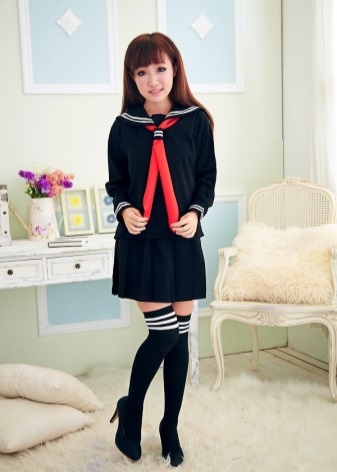
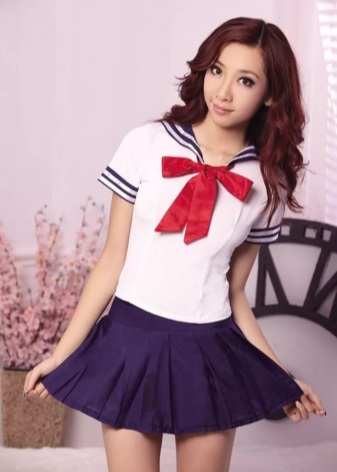
A casual dress for a Japanese fashionista is bright floral tones and large prints. The plot can be purely Japanese - with dragons, with cranes, with seahorses, with Indian animals (turtles), with a fairy from heaven, Kalvinka, or with a bird holding a branch in its beak. Today, Japanese school fashion is characterized by a combination of styles.
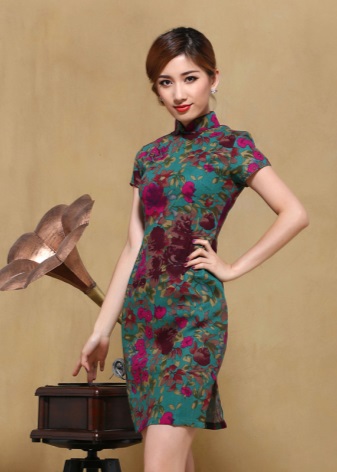

What's trending:
- among Japanese youth there are many lovers of culottes (these are wide trousers, the length of which can be any);
- tops with open shoulders are popular, however, so far only the most determined girls wear them;
- bags and baskets woven from vines;
- sneakers with converse;
- maxi skirts and pleated skirts;
- a spacious cut suit or dress and trousers made of natural fabric;
- top underwear over a T-shirt;
- dress with thin straps over a T-shirt;
- a bare neck along with a bare top of the back is very beautiful and sexy;
- cardigan;
- handkerchief (on the arm, on the leg, not on the neck, on the bag);
- hats;
- sleeveless tops.
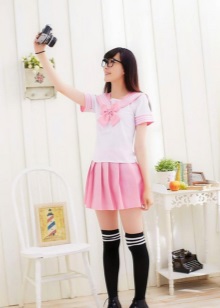
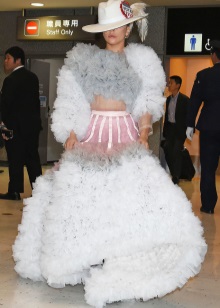
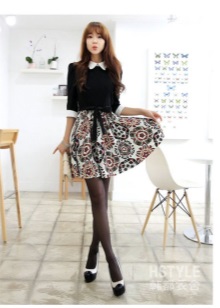
Japanese women are attentive to fashion changes and in this they are helped by numerous magazines that teach the rules of combination and other basic fashion techniques. For high school students, there is a fashion for the gakuran uniform - a military style for boys and lovely sailor suits for girls. Gakuran is derived from "gaku" (student) and "ran" - Holland. And Holland for the Japanese is just a Western European country. So it turns out that "gakuran" is the student who is dressed in a Western way.
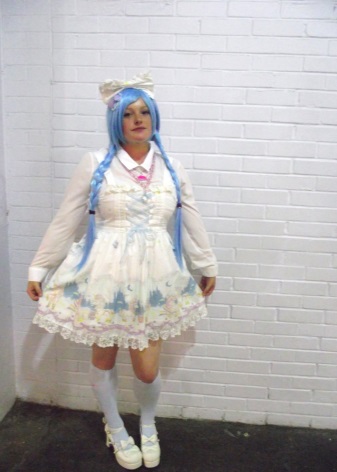
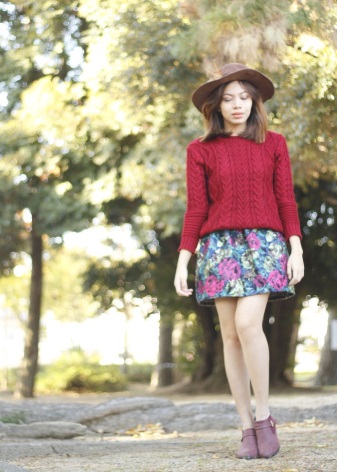
Popular brands
The Japanese look at life in a special way, and this can be seen in the collections from famous fashion designers for both men and women. The same can be said about the following Japanese clothing manufacturers with a worldwide reputation:
- blackmeans;
- Taro Horiuchi;
- Tomorrowland;
- beams;
- beautiful people;
- Yasutoshi Ezumi;
- KiNoe;
- Remy Relief;
- Color;

Takada Kenzo and Isey Miyake tried to cooperate with the fashion industry of the West in the 70s, and in the future they were expected to achieve considerable fame. You can’t exactly call their creations ordinary, because when creating clothes, they used rubber, paper, and iron.By 1981, the world community became aware of two more designers from Japan, they were Rei Kawakubo and Yohji Yamamoto, who soon became the conquerors of the Paris catwalk.
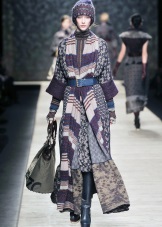

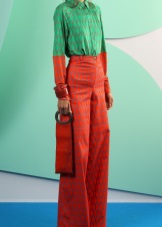
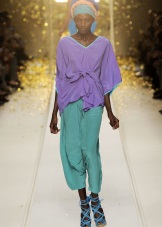
Before the public of Paris had time to move away from the experiences associated with the extraordinary ideas of Yohji Yamamoto, as a new shock - the work of a fragile girl from Japan, Rei Kawakubo and her company Comme des Garcons (literally: boys, like boys). These were models of a completely new type, distinguished by rigor and geometry. They were called "post Hiroshima look".


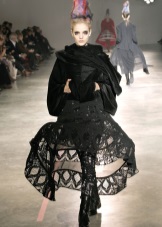
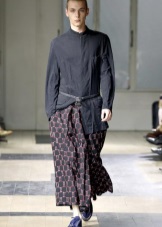
The most famous brand in Japan is Uniqlo. This company is distinguished by restraint and laconic silhouette, neutral colors and high quality material. From year to year, Uniqlo enters into contracts for cooperation with other eminent companies, and every year the world learns about its new extraordinary finds.
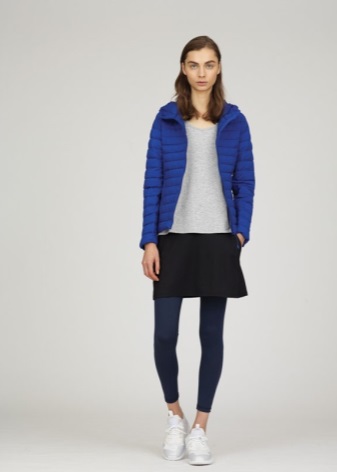

Toga is another Japanese brand, designed by Yasuko Furuta. They are presented with chic patent leather jackets, a high pencil skirt, dresses with a high waist. The main thing in this clothes is symmetry, brightness of colors and prints.
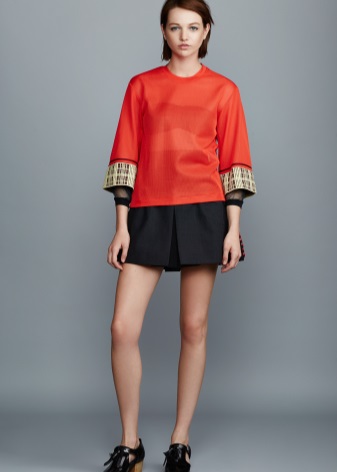

The creator of the Anrealage brand is Kunihiko Morinaga, a young designer with a lot of talent. The public has known him since 2006, when he was recognized by venerable critics. The peculiarity of the brand is the abstract and geometric prints, as well as the monochrome products.

